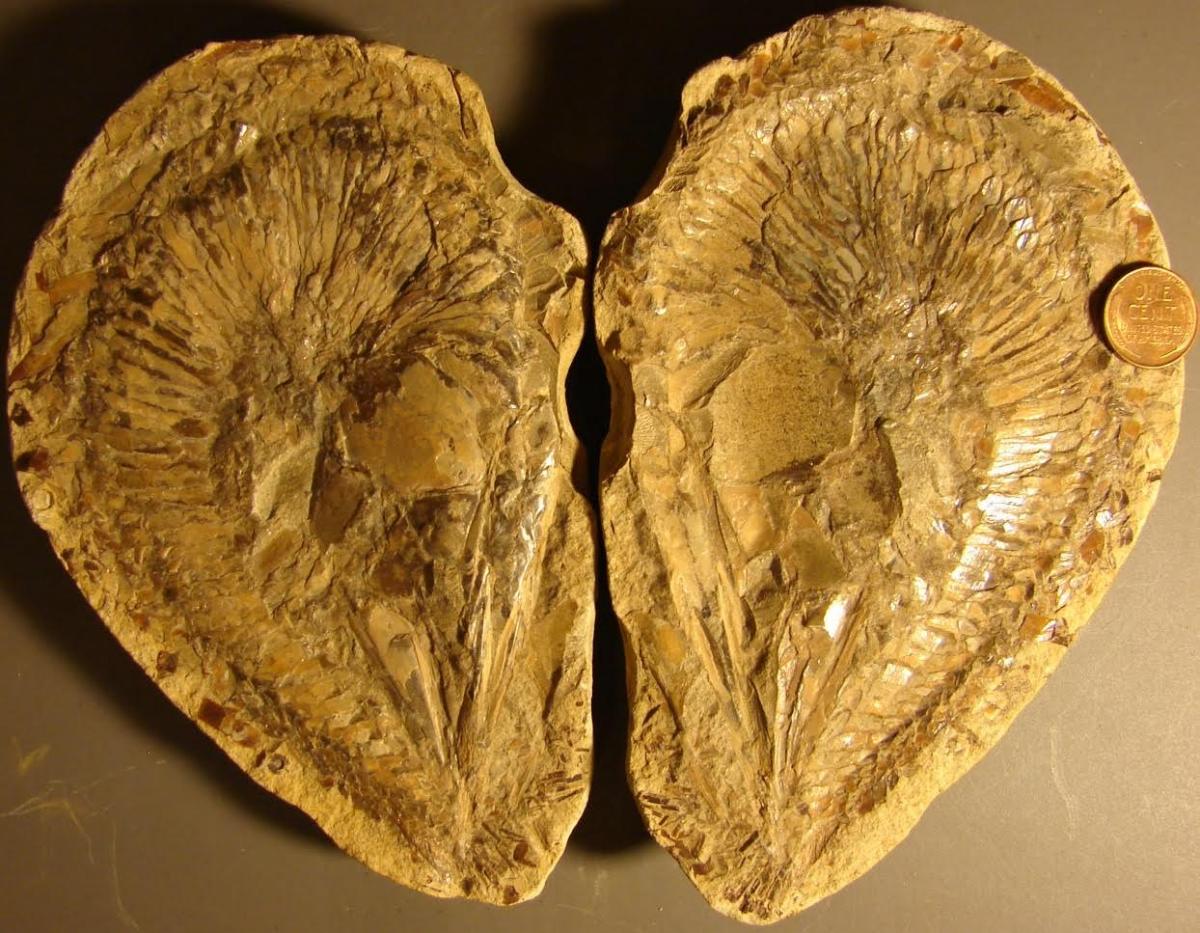
For a change of pace, I gave you the species—Vinctifer comptoni—and asked you to identify its provenance. Maybe that wasn’t so hard, given that it was preserved in a limestone nodule which, carefully opened, revealed these two spectacular halves. The Santana Formation in northeastern Brazil, one of the most important Mesozoic fossilbeds in Gondwana, is famed for its enclosed fossils, especially fishes, such as these. (As opposed to Carlos Santana, who is famed for his rendition of Tito Puente’s “Oye Como Va”—it was a hint, not just a mysterious pleasantry.)
If you couldn’t discern the lineaments of the fish here, Stephanie Keep helpfully offers, “To help you, take a look at this reconstruction of V. comptoni. You’ll see that the head of the long fish is along the ‘hinge’ of the fossil, with its nose pointing down. From the back of the head, you can follow the spine turning along the outside of the fossil in a loop.” Dan Phelps, who kindly sent the photograph, assures us, “I bought this in the early 1990s before the export of such fossils from Brazil became illegal.” Congratulations to Dan Coleman for identifying (by e-mail) the Brazilian provenance of the fish, and a tip of the lagerstattliche Hut to Dan Phelps.

